By Aiden Rayner, Founder of Don’t Move Until You See it

In a virtual Q&A in February 2022, a lucky Chess enthusiast named Max had the opportunity to ask Fabiano Caruana a question.

The question he chose was one we have all wondered, but one we rarely hear interesting answers to. But on this day, Fabiano delivered.
Max asked his question: “When you calculated (your move), did you see the position in your head as clear as the one in front of you?”
The move Max referred to was a brilliancy, seen and calculated ages ahead of time. The brilliancy won Fabiano the game. Fabiano considered the question for a moment before answering. He asked, “your question is essentially a question of visualization?”
Max confirmed it was, so Fabi continued:
“Visualization is probably the most important thing in Chess.“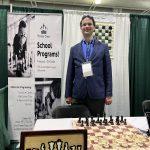
When I heard this, it floored me. I’d been researching and promoting Chess visualization for well over 18 months by this point. I knew how important it was. But to hear it from a 2-time World Championship challenger was quite the moment. I got chills.
Fabiano went on to explain his statement:
“Blunders and mistakes– if you strip them down to their bare essence, (visualization) is where they come from.“
Fabiano just said visualization is the root cause of all mistakes and blunders. Think about it for a moment. Instinctively, we know this to be true. We have seen and felt it. Other than the standard curses and expletives, what is the most common thing we hear players say after a blunder?
“I did not see that.”
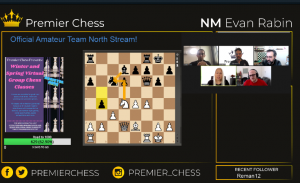
Watch any Chess stream for an hour and you’ll hear it over and over again- Almost every mistake we can make comes down to that simple phrase, or, even worse, the dreaded “I forgot about that.”
Almost all our mistakes come down to what we miss or forget in the moment.
When we miss or forget details in a game, we are quick to blame ourselves. “How could we miss that?!” In frustrated disbelief, we beat ourselves up or we call ourselves stupid.
But we are not stupid. There is a very good reason we make those kinds of mistakes, and there is something we can do to avoid them.
The Fog of Chess
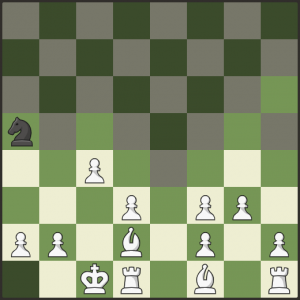
Most Chess players see the chessboard as if through a fog. We try to look ahead but everything is blurry, indistinct, blocked from our sight. We cannot be sure of what is out there or what is coming. By the time we do see the approaching threat, it is too late to do anything about it.
For many of us, the fog is so thick we struggle even to see the board in front of us with any clarity. We hang pieces in one move, blunder mate-in-1 in otherwise winning positions. We miss the easy checkmate and lose on time.
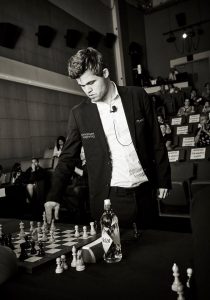 The best players in the world have pushed this fog back so far they can calculate long lines with ease. They never lose track of what is going on. They can play
The best players in the world have pushed this fog back so far they can calculate long lines with ease. They never lose track of what is going on. They can play complicated games blindfolded, like Premier Chess’ 105th Podcast Guest Timur Garayev, who earned a World Record in 2016 for playing the biggest blindfold simultaneous exhibition.
complicated games blindfolded, like Premier Chess’ 105th Podcast Guest Timur Garayev, who earned a World Record in 2016 for playing the biggest blindfold simultaneous exhibition.
But even these players have their limits. The mental fog can never be fully removed. Eventually, even they will feel it. Because it is not some external force.
The mental fog is caused by a physical limit in our brains.
Your working memory
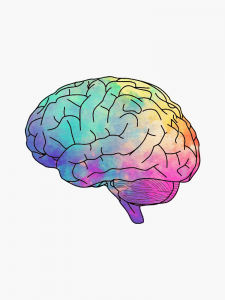 Neurological studies have shown we have several key limits in our cognition. One such limit is in our working memory, our mental RAM. The part we use to hold whatever information we need for our actions at any given moment.
Neurological studies have shown we have several key limits in our cognition. One such limit is in our working memory, our mental RAM. The part we use to hold whatever information we need for our actions at any given moment.
According to these studies, we have 7 slots in our working memory. That is an average – some people get about 9, others about 5. If we try to push beyond that limit, we face overwhelm and fuzziness.
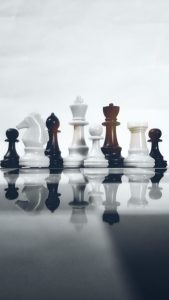 Therein lies a problem: we have 7 slots in our working memory; there are 32 pieces on a Chessboard. One of these numbers is bigger than the other.
Therein lies a problem: we have 7 slots in our working memory; there are 32 pieces on a Chessboard. One of these numbers is bigger than the other.
Think of all the information in a chess game- the pieces, the sightlines, the dynamics, the variations, the combinations. Our brains need to track all this using only 7 available slots. It’s no wonder we miss stuff!
Have you ever been on a big attack, focused on the enemy king, and hung your queen to a sniper bishop? Or have you ever thought through a line, realized it does not work, calculated some other options, then played your first idea anyway?
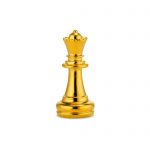 We don’t make these mistakes because we’re stupid. We make them because our working memory becomes overloaded. Our brain had to empty out some slots to make room for new stuff, and now we are down a queen.
We don’t make these mistakes because we’re stupid. We make them because our working memory becomes overloaded. Our brain had to empty out some slots to make room for new stuff, and now we are down a queen.
Working memory and visualization
When we meet the fog, we have hit the edge of our working memory. The further into a game you can go before hitting the fog, the more efficient your working memory will be. The more you miss or forget details, the faster your slots will overload.
There are plenty of band-aid fixes offered by the chess world. A popular one is to make regular “blunder checks” that can help reduce the severity of these problems. They are useful tools, worth adding to your toolbox. That said, they only target the symptom and not the root cause.
The true antidote to this overload is visualization. The better you visualize, the further you push back the fog, and the more efficient your working memory.
We have to make our working memory into a hyper-efficient Chess-information-holding machines! And for that, we need to train visualization.
Isolate and intensify
I have several guiding principles whenever I want to improve a skill. They havee served me well time and time again. The most important of these is the concept of Isolate and Intensify. The principle states we must:
- Isolate the skill you’re trying to improve to allow full focus.
- Intensify the difficulty to a point higher than you would ever need in a normal context.

For our purposes, this means we need to train in a way that gives our complete attention to visualization, at a difficulty

beyond what we would ever need in an actual game. When we do this right, improvement comes swiftly. You can see the principle of Isolate and Intensify in any high performance field, from basketball to business to military training; it is no different in Chess.
To isolate and intensify our Chess visualization, we’re going to recorded audio of games read aloud. I like to think of them as blindfold Chess games without the decisions.
To follow along with a recorded chess game, we have to take in a great deal of information. It forces our brain to shove as much information into our working memory slots as possible. When you start out, you may find it very difficult. But with a few attempts, you willl start to get deeper and deeper into the game!
In a recent coaching session, I took one of my students through this process. On his first go, he lost track of the position in his head by move 2! But after only 15 minutes of work, he was able to reach move 10 and spot the mate-in-2 pattern, without even once seeing the game in front of them!
And it works for higher rated players too. A Women’s FIDE Master, who uses this method, emailed me once ecstatic that she could now calculate 17 moves deep with crystal clarity. It unlocked a whole new experience of the game for her.
Our brains are amazing tools, and they work fast when we force them to.
How to train visualization with Chess audio
For simplicity, I’ll break this section into two sections:
A)How to record your Chess audio
(In case you aren’t in a position to record anything right now, I’ve prepared an audio game for you to use here.)
- Prepare an audio recording device of some kind (I started with the Voice Memos app on my iPhone)
- Go to chessgames.com and find a game that lasts up to 15 moves (or longer if you’re more advanced). Here’s a filtered search I’ve prepared. Pick one of those games, but don’t spend much time looking at the game before the next step.
- Record yourself reading the moves out loud one by one. Leave 1-3 seconds of silence between each move. The silences between moves will give your brain a chance to picture everything. Err on the side of longer silences than you might need. It’s better to have extra time between moves than to feel rushed in your training.
Note: be sure to include turn numbers and the extra details (like checks and promotions).
How to use your Chess audio
When you have your Chess audio file recorded and ready to go (or you’re using my example one), it’s time to get to work! Set aside at least 10 minutes for this exercise.
Listen through your audio file, attempting to follow each move on your mental board as you hear it.
With each move made, answer the following questions:
- What did the last move do?
- Did the last move attack or defend anything?
- Did the last move open up any sightlines for other pieces?
- What are the threats in the position?
Make sure to take your time and work to understand each position with total clarity in your mind. When you lose track of the position (and you probably will, there’s no shame in that), start the recording again from the beginning.
Remember, this is hard. It’s meant to be hard. We are isolating and intensifying the skill of visualization. This process forces our brains to rapidly develop the systems and efficiencies to handle all the information we’re throwing at it. You may feel the impacts instantly, or it may take some time. But stick with it!
Important side note: Visualization does NOT need to be visual
Whoever decided to first use the word “visualization” in Chess has a lot to answer for. Visualization does NOT need to be visual. You do NOT need to see pictures in your head when you visualize. If you have aphantasia or are otherwise a non-visual thinker, you’ll be totally fine. There are many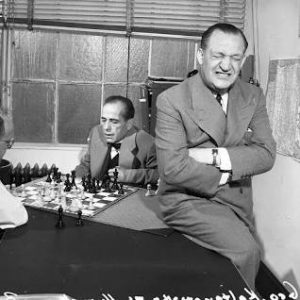 examples of successful Chess players who never saw pictures in their heads when “visualizing”. (Including George Koltanowski, who completed a 34-board blindfold simul in 1937!)
examples of successful Chess players who never saw pictures in their heads when “visualizing”. (Including George Koltanowski, who completed a 34-board blindfold simul in 1937!)
Whenever you see the word visualization, I want you to swap it out in your mind for “conceptualization”. You don’t need to “visualize” anything, you just need to understand what’s going on.
Your brain has been making sense of complex information since the day you were born. It knows what it needs to do. If you find yourself struggling to see pictures as you do the exercise above, instead focus only on understanding the game. Let your brain use whatever method it wants to use. And whatever it decides to do, trust it.
The other side
We tend to look at players like Fabiano, or Ding, or Hikaru and be amazed by how well they can visualize. The crazy long variations they can rattle off, the blindfold games they can play to perfection. The clarity, the detail, the distance of their calculations.
We look at those players and we think, “Wow, they must be so good at Chess to visualize like that.” But we have it backwards. Fabiano, Ding, 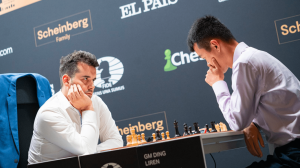 and Hikaru
and Hikaru are good at Chess in large part because they visualize well. It’s a huge part of why they’re among the best.
are good at Chess in large part because they visualize well. It’s a huge part of why they’re among the best.
Our visualization skills can make or break our improvement. It is part of chess that has gone overlooked and underworked for far too long, but now you have the tools to make a big difference in your own skills.
In his Q&A, Fabiano went on to say “the best players are the ones who can visualize well, and the ones who cannnot will make mistakes.” Do you want to be in the first group or the second?
To go deeper into any of these ideas and learn about Don’t Move Until You See It, you can get my free Master Skill Series here.


Pretty! This has been a really wonderful post
It was useful, thank you
thanks
very very goood
Shop the gorgeous and sophisticated selection of Jalabiya gowns from Maples Closet, which were modelled by traditional UAE clothing. Our collection features both contemporary and conventional styles made from premium fabrics with exquisite craftsmanship. Our Jalabiya dress uae is the ideal option whether you’re attending a major occasion or simply searching for a casual yet fashionable attire. Experience the elegance of Maple’s Closet’s assortment by shopping right away.
At We Sell Dead Lots, we specialize in providing top-quality wholesale electronics to businesses, retailers, and individuals who are searching for great deals and bulk purchases.Our extensive inventory boasts an impressive selection of electronic devices, ranging from smartphones and tablets to laptops, gaming consoles, cameras, audio equipment, and much more. Whether you are a reseller, a small business owner, or an individual looking to upgrade your tech arsenal, we have the perfect options to suit your needs.
Thank you so much for the advice. Great read
too much whitespace in these comments
Game Overload! Endless options for every type of gamer
Prove your strength in the ultimate quest!
آموزشگاه حسابداری در یزد برای ورود به بازار کار
Thank you for the useful information that I rarely find on the sites
I have benefited a lot from this information
Thank you for sharing indeed great looking !
The surest way to win is to stick to the apples that appear and shoot arrows at them.
This game is a perfect mix of fun and challenge. I love how every match forces you to think about timing and power. The ragdoll physics add a chaotic charm that never gets old. I’ve spent hours trying to master the perfect shot and still find myself laughing at how the characters fly when hit.
This article contains excellent writing. Your insights are obvious and easy to understand because of how you organised your thoughts. <a href="[Link deleted]flip game.
The information shared is upto the details intended. Great work done. Just as we did while setting up TextNow APK
The move Max referred to was a brilliancy, seen and calculated ages ahead of time. The brilliancy won Fabiano the game. Fabiano considered the question for a moment before answering.
This site is a great resource if you want to improve your ability to calculate, see ahead, and reduce “blindness” errors in chess. If you practice seriously using the methods in this article, visualization can really become your “superpower” in chess.
Experience unmatched expertise combined with a genuine dedication to excellence that truly sets this provider apart.구글찌라시 I appreciate the consistent quality and transparent process that builds confidence and trust from start to finish.
Trustworthy and efficient, this solution delivers superior performance that truly stands out in a competitive market.강남쩜오 The level of skill and dedication demonstrated here guarantees superior outcomes that truly stand out in a competitive market.
For chess players looking to enhance their calculation skills, foresight, and capacity to minimize “blindness” mistakes, this site is an excellent resource. Visualization can truly become your “superpower” in chess if you practice systematically with the methods in this article. @<a href="[Link deleted]fortress
For chess players looking to enhance their calculation skills, foresight, and capacity to minimize “blindness” mistakes, this site is an excellent resource. Visualization can truly become your “superpower” in chess if you practice systematically with the methods in this article.
Hi there. As a developer of game software, I frequently enjoy entertaining people with a variety of game genres. However, Geometry Dash Subzero has recently become one of my favorite games. I can explore a vibrant neon universe in this fast-paced game.
Watch any Chess stream for an hour and you’ll hear it over and over again- Almost every mistake we can make comes down to that simple phrase, or, even worse, the dreaded “I forgot about that.”